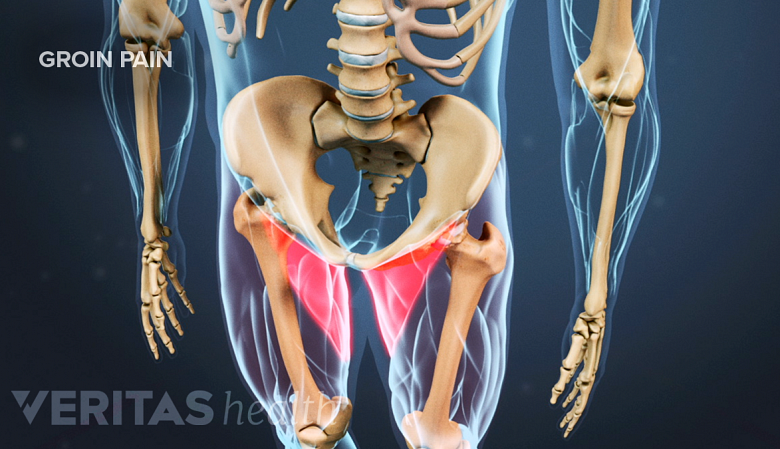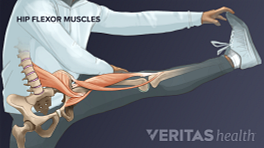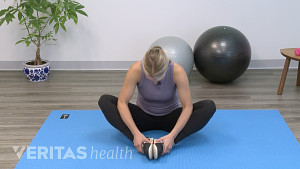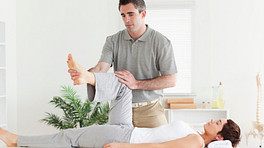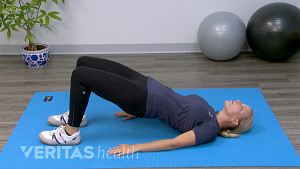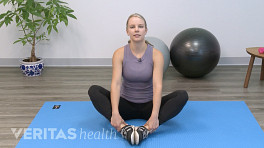Hip flexor pain can usually be treated quickly with non-surgical, low-risk treatments. In fact, one study found that 80% of college athletes who reported strained hip flexors were able to return to play in less than one week. 1 Eckard, T. G., Padua, D. A., Dompier, T. P., Dalton, S. L., Thorborg, K., & Kerr, Z. Y. (2017). Epidemiology of Hip Flexor and Hip Adductor Strains in National Collegiate Athletic Association Athletes, 2009/2010-2014/2015. The American Journal of Sports Medicine, 45(12), 2713–2722. https://doi.org/10.1177/0363546517716179 The most effective treatments are typically rest and self-care.
In This Article:
- How to Treat Hip Flexor Pain
- Hip Flexor Stretches
- Easy Exercises for Hip Flexor Pain
- Video: Kneeling Hip Flexor Stretch
Self-Care for Hip Flexor Pain
Making simple changes or including self-care treatments can make daily life with hip flexor pain manageable.
Self-care for hip flexor pain may include:
- Avoiding bending at the hip, such as when reaching into a stove or picking up a child, in order to rest the affected area.
- Avoiding activities that put stress on the hip, including any sports that involve running, kicking, or turning. A person may want to consider limiting going up or down stairs or walking long distances; however, activities should not be completely avoided.
- Applying ice or heat to the affected area of the hip or groin. This can be done with ice cubes or frozen vegetables (in plastic bags) wrapped in a towel, or a hot water bottle.
- Compressing the affected hip with an elastic bandage to reduce any swelling. The elastic bandage can be wrapped around the hip and pelvis. Compression should be moderately tight without causing any additional pain.
- Elevating the affected leg when possible to reduce any possible swelling.
- Taking over-the-counter pain medication, such as ibuprofen (Advil, Motrin) or acetaminophen (Tylenol) may help with hip flexor pain. Be careful when taking over-the-counter pain relief as they may come with side effects and are not recommended for long-term use.
Not all of these remedies will work for everyone. People are encouraged to try out each one to determine what works best.
While many cases of hip flexor pain can be relieved with at-home treatments, sometimes pain persists. In these cases, medical attention may be necessary.
When to See a Doctor
Severe pain in the hip and/or groin area warrants immediate medical attention.
In many cases, hip flexor pain can be resolved with home treatment within a few weeks. If pain persists for more than 4 to 6 weeks, contact a doctor. A doctor can make a diagnosis and recommend appropriate treatment.
A person should seek immediate medical attention if they experience:
- Severe pain or sharp and shooting hip or groin pain
- The inability to walk or bear weight on the affected hip
- Sudden swelling in the hip or groin
- Protruding bones or deformities, especially after falling or a car accident
- Signs of an infection, such as a fever, redness, and the chills
These are signs of serious injuries that need immediate medical attention.
Watch: Hip Pain Diagnosis Video
- 1 Eckard, T. G., Padua, D. A., Dompier, T. P., Dalton, S. L., Thorborg, K., & Kerr, Z. Y. (2017). Epidemiology of Hip Flexor and Hip Adductor Strains in National Collegiate Athletic Association Athletes, 2009/2010-2014/2015. The American Journal of Sports Medicine, 45(12), 2713–2722. https://doi.org/10.1177/0363546517716179

